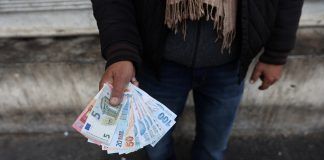The Iranian tourism industry has suffered significant financial losses after European airlines suspended all flights to the country in the aftermath of the crash of a Ukrainian passenger plane near Tehran’s Imam Khomeini International Airport on Jan. 8, which killed everyone on board, according to Ali Shariati, a member of the Iran Chamber of Commerce, Industries, Mining and Agriculture.
Mr. Shariati made the comments in an interview with the Iranian Labor News Agency (ILNA).
“The cancellation of flights is part of a broader organized plan to attack the Iranian economy,” Shariati argued. “The move prevents planes from flying through the Iranian airspace. It means a massive loss of revenue for the country. Also, many Iranians used German and Austrian airlines to travel to Europe. They cannot do that right now. According to the latest reports, foreign travel agencies have canceled 70 percent of their tour packages to Iran. Hotels and other businesses that depend heavily on foreign tourism have also lost income.”
Earlier this month, the Islamic Revolutionary Guards Corps (IRGC) forces shot down a Ukrainian passenger plane, killing all 176 people on board, including 82 Iranians, 57 Canadian citizens, 11 Ukrainians flight crew, and several Afghan, German, and Swedish nationals.
The downing of the plane occurred only a few hours after they fired a series of missiles at the Al Asad Air Base in Iraq, which houses Iraqi and U.S. troops.
Iran said the attack on the Al Asad Air Base was in retaliation to the killing of Brigadier General Ghasem Soleimani, the commander of the IRGC’s Qods Force (IRGC-QF), who died in a targeted U.S. drone strike at Baghdad Airport on January 3.
Tehran initially denied reports that its military had shot down the Ukrainian plane, but eventually admitted that its surface-to-air defense systems had downed the aircraft.
Iran Says Its Military Shot Down Ukrainian Passenger Plane in Error
The incident sent shock waves through the region and the rest of the world, prompting the European Union Aviation Safety Agency (EASA) to advise all European airlines to avoid Iranian airspace until further notice.
Many European airlines have suspended all flights to and from Iran in the past week. They have also banned all flights by the Airline of the Islamic Republic (Iran Air) to European cities.
The Swedish Transport Agency temporarily suspended all flights by Iran Air to Stockholm and Gutenberg on January 13. Iran Air flies twice a week, typically on Saturdays and Wednesdays to Stockholm and once a week on Mondays to Gutenberg.
Meanwhile, Iran Air has informed all of its passengers of the cancellations and changes to flight schedules. The airline has reportedly sold out all flights to the two Swedish cities for the Nowruz vacations (Iranian new year starting March 21). The airline will incur a massive loss in revenue because of the cancelations.
While the German airline Lufthansa has canceled flights to Iraq, Air France and Dutch carrier KLM have suspended all flights over Iranian and Iraqi airspace until further notice.
The U.S. Federal Aviation Administration (FAA) has also banned all American passenger planes from flying over Iraq, Iran, the Persian Gulf and the Gulf of Oman.
The International Civil Aviation Organization’s “Tariffs for Airports and Air Navigation Services (DOC 7100)” lists landing charges for various aircraft at international airports. The suspension of European flights into and out of Iran has dealt a significant financial blow to the country.
According to Siavash Amir Mokri, the managing director of the Iran Airport Company — a subsidiary of the Ministry of Roads and Urban Development — Iran collects approximately $500 million a year in overflight fees. The fee is calculated based on the maximum takeoff weight (MTOW) of the aircraft and the number of kilometers flown, with a minimum charge of $100.
It costs, on average, $800 in overflight fees for foreign airlines to use Iranian airspace. There are between 950 and 1,000 flights over Iranian airspace every day, which means that the country is losing between $300 million to $400 million a year in revenue.
[Translated from Persian by Fardine Hamidi]



